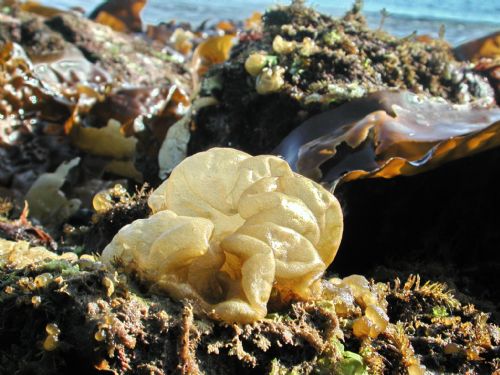
Colpomenia peregrina ('Oyster Thief, Sea Potato) is a brown alga, which usually grows epiphytically on other seaweeds. Its thallus usually grows starting out as a hollow globular or ovoid bubble or sack and later resembled a crumpled paper bag, up 30-70 mm (occasionally 90-210 mm) in diameter, attached to an alga or a surface by a tangle of rhizoid filaments. Patches of pleurolocular (multicellular) sporangia (reproductive cells) occur on the lower half of the thallus. The plants are olive to yellow-brown, This seaweed is referred to as an 'Oyster Thief' because the hollow plants can fill with air or water, and carry attached oysters away. Colpomenia peregrina is considered native to both coasts of the North Pacific, and is considered cryptogenic in Australia and New Zealand. It was first collected in France in 1905, and became widespread from Norway to the Canary Islands, the Mediterranean and Black Seas. In 1960, this seaweed was first collected in Nova Scotia, and has been slowly expanding its range southward, reaching Rhode Island in 2017. This alga is considered to be a potential pest to the Eastern Oyster fishery and culture, and a potential competitor with native seaweeds.